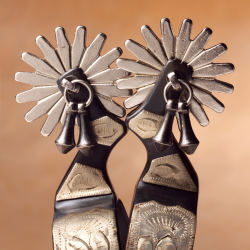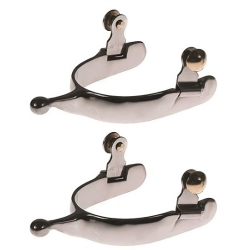Welcome to our blog post on how to slow a horse down without pulling on the reins. As horse enthusiasts, we understand the importance of effective communication and building trust with our equine companions. Pulling on the reins may seem like the obvious solution to slowing down a horse, but it can often lead to more resistance and frustration. In this post, we will explore alternative techniques that focus on body language, natural horsemanship, and developing a strong bond with your horse. By understanding these methods, you can enhance your communication skills and create a more harmonious riding experience. So let's dive in and discover how to slow a horse down without relying solely on reins!
Understanding the Basics: The Importance of Communication and Trust
Effective communication and trust are fundamental elements when it comes to working with horses. Before we delve into specific techniques for slowing down a horse without pulling on the reins, it is essential to understand the significance of communication and trust in this process.
Horses are highly perceptive animals that rely on non-verbal cues and body language to understand and respond to their surroundings. As riders, it is crucial for us to communicate our intentions clearly and effectively to our horses. This requires developing a deep understanding of their behavior, instincts, and responses.
Building trust is equally important. Horses, like any other living beings, need to feel safe and secure in their environment. Trust is not something that can be demanded but rather earned through consistent and respectful interactions. When a horse trusts its rider, it is more likely to respond positively to their cues and willingly cooperate.
Without a foundation of clear communication and trust, any attempt to slow a horse down without pulling on the reins may be met with resistance or confusion. Therefore, taking the time to establish a solid relationship with your horse is crucial before proceeding with the training techniques we will discuss in this blog post.
In the next section, we will explore how to develop non-pulling communication techniques that can help you effectively slow down your horse. By understanding why pulling on the reins can be counterproductive and the supplies needed for training, you will be better prepared to embark on this journey with your equine partner.
How to Develop Non-Pulling Communication Techniques
When it comes to slowing a horse down without relying on the reins, developing non-pulling communication techniques is key. Pulling on the reins can create tension and resistance in the horse, leading to an ineffective and potentially frustrating experience for both horse and rider. In this section, we will explore why pulling on the reins can be counterproductive, the supplies needed for training, and the process of training itself.
Why Pulling on Reins Can Be Counterproductive
Pulling on the reins as the sole means of slowing down a horse can have unintended consequences. It can cause the horse to brace against the pressure, resulting in a tug-of-war between the rider and the horse. This not only creates tension and discomfort for the horse but also diminishes the rider's ability to effectively communicate with their equine partner.
Furthermore, excessive reliance on the reins for control can lead to a horse becoming desensitized to rein cues. This means that they may eventually become unresponsive or resistant to rein aids, making it difficult to slow down or control their speed.
Supplies Needed for Training
Before you begin training your horse to respond to non-pulling cues, it's important to gather the necessary supplies. These may include:
-
A well-fitted saddle and bridle: Ensuring that your horse is comfortable in their tack is essential for effective communication.
-
A round pen or enclosed area: Having a safe and enclosed space to work with your horse will allow for focused training sessions.
-
A training halter or bridle with a lead rope: These tools provide additional control and allow for clear communication with your horse.
-
Treats or rewards: Positive reinforcement is a valuable tool in training. Having treats or rewards on hand can help reinforce desired behaviors.
The Process of Training
Training your horse to respond to non-pulling cues requires patience, consistency, and a thorough understanding of your horse's individual needs and capabilities. Here are some steps to consider when embarking on this training journey:
-
Establish a clear communication system: Begin by teaching your horse basic cues for moving forward, stopping, and changing speed. This can be done on the ground or in the saddle, depending on your horse's level of training.
-
Develop body language cues: Horses are highly attuned to body language, so incorporating clear and consistent body cues can be an effective way to communicate speed changes. For example, using your seat, legs, and weight shifts to convey your intentions.
-
Gradually reduce reliance on reins: As your horse becomes more responsive to body language cues, gradually decrease the reliance on rein aids. This can be done by applying less pressure on the reins and focusing more on using your body to communicate.
-
Practice consistency and repetition: Consistency is key when training a horse. Regularly practice the non-pulling communication techniques in various environments and situations to reinforce the desired responses.
Remember, training a horse takes time and patience. It's important to progress at a pace that is suitable for your horse's learning ability and comfort level. In the next section, we will delve deeper into using body language to effectively control speed and communicate with your horse.
How to Use Body Language to Control Speed
Using body language to control speed is a valuable skill that can help you communicate with your horse without relying solely on the reins. Horses are incredibly perceptive to the subtle cues and signals we give through our body movements. In this section, we will explore the signs that indicate your horse may be ignoring your cues, the role of your body in directing the horse, and proper techniques for body language communication.
Signs Your Horse is Ignoring Your Cues
Before delving into body language communication, it's important to be aware of the signs that your horse may be disregarding or ignoring your cues. Some common indicators include:
-
Lack of response: Your horse may not respond promptly or at all to your cues for slowing down, such as a light pull on the reins or a shift in your weight.
-
Tension or resistance: If your horse becomes tense or exhibits resistance, such as bracing against the bit or pulling against the reins, it may be a sign that they are not fully understanding or accepting your cues.
-
Inconsistent speed: Your horse may maintain a consistent speed or even increase their pace despite your attempts to slow them down through rein aids.
The Role of Your Body in Directing the Horse
Your body language plays a crucial role in communicating with your horse and influencing their speed. Here are some key elements to consider:
-
Seat position: Your seat is a powerful tool for controlling speed. Sitting deep and relaxed in the saddle can convey a signal to your horse to slow down. Conversely, a forward or tense seat may indicate to the horse to maintain or increase their speed.
-
Weight distribution: Shifting your weight slightly back can signal to the horse to slow down, while leaning slightly forward can encourage them to move forward. Experiment with subtle weight shifts to communicate your intentions.
-
Leg aids: Your leg position and pressure can also influence your horse's speed. Light pressure with your lower legs can encourage a slower pace, while stronger leg aids can ask for more forward movement.
-
Rein contact: While the focus of this blog post is on reducing reliance on the reins, it's important to maintain a light and consistent rein contact. A steady and elastic connection with the horse's mouth can provide support and enhance the effectiveness of body language cues.
Proper Techniques for Body Language Communication
To effectively communicate with your horse using body language, consider the following techniques:
-
Practice self-awareness: Be conscious of your own body position, tension, and cues. Horses are incredibly perceptive and can detect even the slightest changes in your body language.
-
Start with clear and consistent cues: Begin by using clear and consistent cues for slowing down, such as sitting deep in the saddle and applying light rein pressure. Over time, your horse will learn to associate these cues with the desired response.
-
Use visual focus: Directing your gaze towards your desired destination or a specific point on the ground can also influence your horse's speed. Looking ahead and focusing on where you want to go can help convey your intentions.
-
Practice timing and release: Timing is essential when using body language cues. Release the pressure or cue as soon as your horse responds appropriately. This allows them to understand that they have followed your cue correctly.
By mastering the art of body language communication, you can effectively control your horse's speed without relying solely on the reins. In the next section, we will delve into natural horsemanship techniques and how they can further enhance your communication with your equine partner.
Natural Horsemanship Techniques
Natural horsemanship techniques provide a holistic approach to working with horses, focusing on building a partnership based on trust, respect, and clear communication. In this section, we will explore the philosophy behind natural horsemanship, how to apply these techniques to slow a horse down without pulling on the reins, and the benefits and challenges associated with this approach.
The Philosophy Behind Natural Horsemanship
Natural horsemanship is rooted in the belief that horses are intelligent and sensitive beings that respond best to gentle and clear communication. This approach emphasizes understanding the horse's natural instincts and behaviors, and working with them rather than against them. Natural horsemanship seeks to establish a harmonious relationship between horse and rider, based on trust, respect, and cooperation.
How to Apply Natural Horsemanship Techniques
When it comes to slowing a horse down without relying on the reins, natural horsemanship techniques can be highly effective. Here are some key principles to keep in mind:
-
Groundwork exercises: Groundwork is an essential component of natural horsemanship. Through exercises such as leading, lunging, and liberty work, you can establish a strong foundation of communication and respect with your horse. These exercises can help teach your horse to respond to your body language cues, including those for slowing down.
-
Building trust and rapport: Natural horsemanship places a strong emphasis on developing trust and rapport with your horse. Spend time bonding with your horse through grooming, hand grazing, and other non-riding activities. This will help strengthen your connection and enhance your ability to communicate effectively.
-
Focus on relaxation and rhythm: Encouraging relaxation and finding a rhythmic connection with your horse can help create a calm and responsive partnership. Horses are more likely to slow down and listen to subtle cues when they feel relaxed and in sync with their rider.
-
Positive reinforcement: Natural horsemanship often incorporates the use of positive reinforcement to reward desired behaviors. By offering praise, treats, or other rewards when your horse responds correctly to your cues for slowing down, you can reinforce the desired behavior and strengthen the communication bond.
Benefits and Challenges of Natural Horsemanship
Natural horsemanship techniques offer several benefits, including:
-
Enhanced communication: By focusing on non-verbal cues and body language, natural horsemanship allows for a deeper level of understanding and communication between horse and rider.
-
Trust and respect: These techniques prioritize building a foundation of trust and respect, which leads to a stronger and more cooperative partnership.
-
Calmer and more responsive horse: Natural horsemanship methods can help create a more relaxed and attentive horse, making it easier to slow them down without resorting to harsh rein aids.
However, it's important to acknowledge that natural horsemanship requires time, patience, and a willingness to learn and adapt. It may also require additional knowledge and skills to apply these techniques effectively. Each horse is unique, and what works for one may not work for another, so it's important to remain open-minded and adaptable in your approach.
In the next section, we will explore how to develop a strong bond with your horse, which is essential for effective communication and cooperation.
Developing a Strong Bond With Your Horse
Developing a strong bond with your horse is crucial for effective communication, trust, and cooperation. A solid connection based on mutual understanding and respect can greatly enhance your ability to slow your horse down without pulling on the reins. In this section, we will discuss the importance of regular time and attention, understanding and responding to horse behavior, and building trust through consistent behavior.
Regular Time and Attention
Spending quality time with your horse on a regular basis is essential for building a strong bond. Here are a few ways to cultivate this connection:
-
Grooming and care: Regular grooming sessions not only help keep your horse clean and healthy but also provide an opportunity for bonding. Take the time to groom your horse, paying attention to their body language and reactions. This intimate contact helps build trust and strengthens your relationship.
-
Groundwork exercises: Incorporating groundwork exercises into your routine can strengthen your communication skills and deepen your horse's trust in you. Engage in activities such as leading, lunging, and liberty work, focusing on clear communication and respect.
-
Hand grazing: Allowing your horse to graze while in-hand can be a peaceful and bonding experience. It provides an opportunity for both of you to relax and enjoy each other's company in a natural setting.
Understanding and Responding to Horse Behavior
Understanding your horse's behavior is crucial for effective communication. Horses communicate through body language, and being able to read and respond to their cues is essential. Here are some key aspects to consider:
-
Observation: Take the time to observe your horse's behavior in various situations. Notice their body posture, facial expressions, and overall demeanor. This will help you understand their mood, level of relaxation, and receptiveness to your cues.
-
Listening and responding: Horses communicate their needs and emotions through subtle cues. When your horse expresses discomfort, fear, or resistance, it's important to listen and respond appropriately. This may involve adjusting your training approach, providing reassurance, or addressing any physical issues that may be contributing to their behavior.
-
Consistency: Consistency in your own behavior is essential for building trust and understanding. Horses thrive on routine and predictability, so maintaining a consistent approach in your interactions and training sessions will help your horse feel secure and comfortable.
Building Trust Through Consistent Behavior
Trust is the foundation of any strong bond with your horse. Here are some tips for building trust through consistent behavior:
-
Clear and fair communication: Be clear and consistent in your cues and expectations. Avoid sudden or unpredictable changes in your aids or requests, as this can confuse and erode trust.
-
Patience and understanding: Horses learn at their own pace, and it's important to be patient and understanding during the training process. Avoid rushing or pushing your horse beyond their comfort zone, as this can undermine trust.
-
Rewarding positive behavior: Positive reinforcement is a powerful tool for building trust. Reward your horse with praise, treats, or a gentle pat when they respond correctly to your cues for slowing down. This positive association will strengthen the bond between you and encourage continued cooperation.
Remember, building a strong bond with your horse takes time and consistency. By investing in regular time and attention, understanding and responding to your horse's behavior, and building trust through consistent behavior, you will lay a solid foundation for effective communication and successful riding experiences.
In the next section, we will conclude our blog post by summarizing the key points discussed and offering some final thoughts on slowing a horse down without pulling on the reins.












































